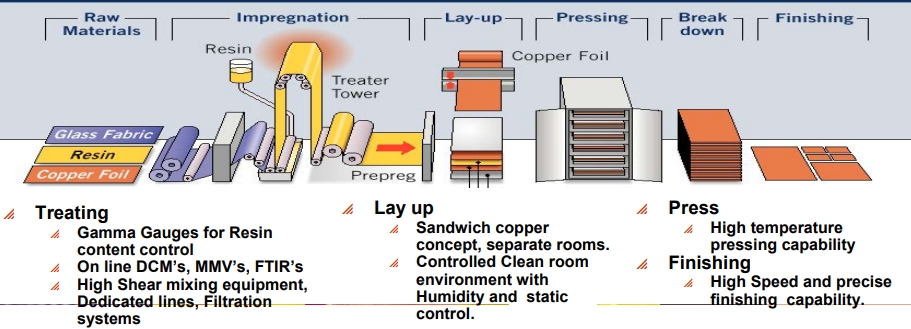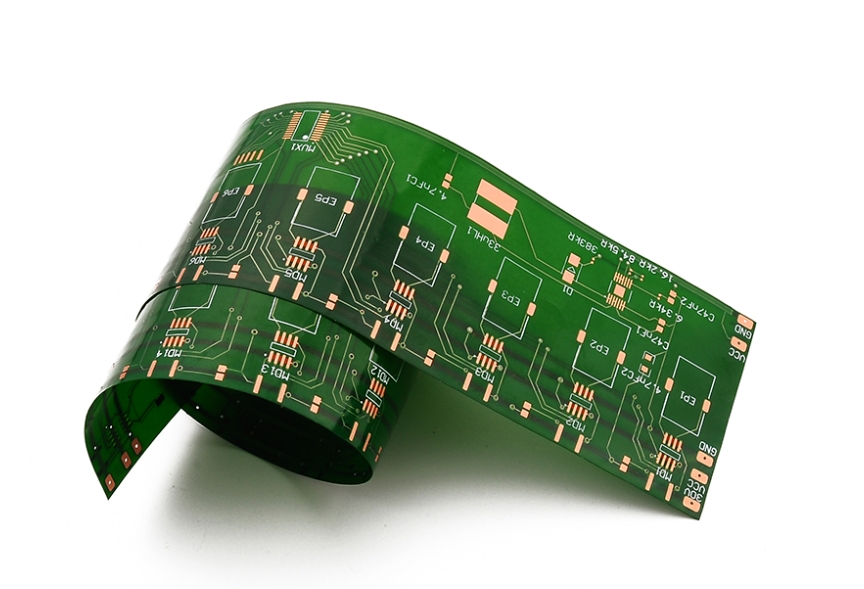What is a flexible PCB board?
Flexible Printed Circuit Board (FPC), also known as Flexible Circuit Board or Flexible Circuit Board, is a kind of printed circuit board made of flexible substrate material, different from the traditional rigid PCB board in that the flexible PCB board can be bent, folded, twisted, suitable for three-dimensional mounting, the board made of flexible PCB, light, thin, bendable, wider range of applications, can meet more needs. Flexible PCBs are needed in smartphones, tablet PCs, medical devices, aerospace equipment, in-car entertainment systems, sensors, industrial manufacturing, aerospace, and other fields, with strong applicability.

Table of Contents
Manufacturing process
The manufacturing process of flexible PCB does not differ much from the rigid PCB process, but its substrate and structure are not the same, there will be some differences, and the cost is a little higher than rigid PCB.
Step 1: Cut the flexible copper board into the required size according to the design specifications
Step 2: Drill through holes, blind holes, buried holes, and other holes in the laminate to connect the circuits between different layers
Step 3: Deposit a thin layer of copper on the hole wall to realize the electrical connection between layers
The fourth step: the use of light-sensitive equipment photolithography to transfer the circuit pattern to the copper-clad plate for the next step of etching, to ensure that the circuit left after etching is the design required
Step 5: Use chemical solutions to remove unwanted copper foils, retaining the realization of the designed circuit route
Step 6: The surface of the circuit is treated with antioxidant and corrosion protection, such as gold plating, tin plating, or OSP (Organic Solderable Protectant).
Step 7: The overlay film is laminated to the circuit surface to provide insulation, moisture, and dust protection to improve the safety and longevity of the PCB board.
Step 8: The layers are pressed together using a lamination technique.
Step 9: Cut the product into the desired shape by cutting or cutting technology.
Step 10: Finished product testing to ensure product quality, after the test is correct, packaging and shipment.

Advantages of flexible PCB boards
Flexible PCBs can be bent and folded while maintaining performance, relative to rigid PCB applications are wider, flexible PCBs are lightweight, space-saving, have good conductivity, and high design freedom, the advantages of installing flexible PCBs is also more convenient, in manufacturing cost will be a little higher, but saves manpower and time costs.
Production of flexible PCB materials, mainly polyimide (PI), polyester (PET), polyethylene naphthalene dicarboxylate (PEN), adhesives, copper foil, PI, PET, etc., each with its advantages and disadvantages, mainly depends on what is used.
Advantages and Disadvantages of Materials
| Material | Advantages | Disadvantages |
|---|---|---|
| Polyimide (PI) | High-temperature resistance, chemical corrosion resistance, excellent mechanical properties | High cost |
| Polyester (PET) | Low cost | Poor heat resistance and mechanical properties |
| Polyethylene Naphthalate (PEN) | Balanced performance between PI and PET, moderate cost | |
| Epoxy Resin Adhesive | High bonding strength, good heat resistance | |
| Acrylic Resin Adhesive | Low cost, good flexibility | Poor heat resistance |
| Rolled Copper Foil | Good ductility, excellent bending resistance | High cost |
| Electrolytic Copper Foil | Low cost | Poor ductility and bending resistance |
Differences Between Flexible PCBs and Rigid PCBs
| Feature | Flexible PCB | Rigid PCB |
|---|---|---|
| Substrate | Flexible materials (e.g., PI, PET) | Rigid materials (e.g., FR-4) |
| Bendability | Can bend, fold, and twist | Cannot bend |
| Thickness | Thin | Thick |
| Weight | Light | Heavy |
| Installation Space | Three-dimensional | Two-dimensional |
| Cost | High | Low |
| Applications | Consumer electronics, automotive electronics, medical devices, aerospace, etc. | Computers, communication devices, industrial control, etc. |